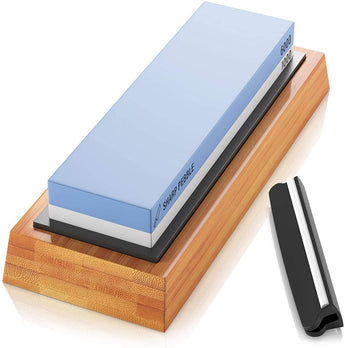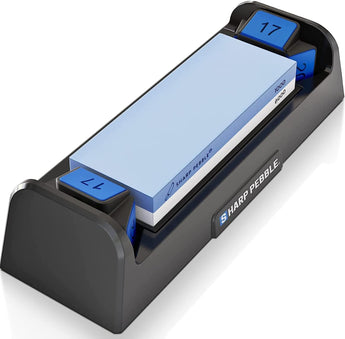
Understanding Sharpening Stones
Sharpening stones are typically made from natural or synthetic materials like ceramic, diamond, or various types of stone. These materials provide the abrasive surface needed to hone and sharpen your knife. The stone's "grit" refers to the size of the abrasive particles on the stone - the lower the grit number, the larger the particles and the more material they will remove from your knife's edge.
Why Sharpening Stones are Great for Pocket Knives
Pocket knives are versatile tools that can be used for a wide range of tasks, from opening packages to preparing food to outdoor survival tasks. This versatility makes it essential to maintain a sharp edge. Here's why sharpening stones excel in this task:
-
Versatility: Sharpening stones come in a wide range of grits. This allows you to start with a coarse stone to reshape a dull or damaged blade, then move to a finer grit to hone the edge to a razor-sharp finish.
-
Control: When using a sharpening stone, you have complete control over the sharpening process. You can adjust the angle and pressure to suit your specific knife and desired sharpness.
-
Cost-effective: While there might be an upfront cost for a good quality sharpening stone, they can last for years with proper care. This makes them a cost-effective option in the long run compared to other methods like knife sharpening services.
-
Skill-building: Learning to sharpen your own knife is a valuable skill, especially for outdoor enthusiasts and survivalists. It's also a therapeutic process that can be quite satisfying once mastered.
How to Use a Sharpening Stone with a Pocket Knife
Sharpening a knife with a stone is a simple process, but it requires practice to master. Here's a basic guide:
-
Preparation: Soak your stone in water for about 5 to 10 minutes, until bubbles stop coming out of it. This helps to prevent the stone from damaging the knife and makes the sharpening process smoother.
-
Angle your knife: Hold your knife at an angle of about 20 degrees against the stone. This angle is a good balance between sharpness and durability for most pocket knives.
-
Sharpen: Slide the knife across the stone, from the base of the blade to the tip. Repeat this process on both sides of the knife until it's sharp.
-
Hone: After sharpening with a coarse stone, switch to a finer grit to hone the edge. This will create a sharper, more polished edge.
-
Clean: Rinse the stone and knife under water to remove any metal particles. Dry thoroughly to prevent rust.




Great message – I love your products, and have relied on them for several years. They perform as advertised and are made in America. It’s a solid product and essential for my woodworking, and outdoor life. Thanks
You don’t say if the motion should be in the direction of the sharp edge or in the opposite direction.
Thank You.